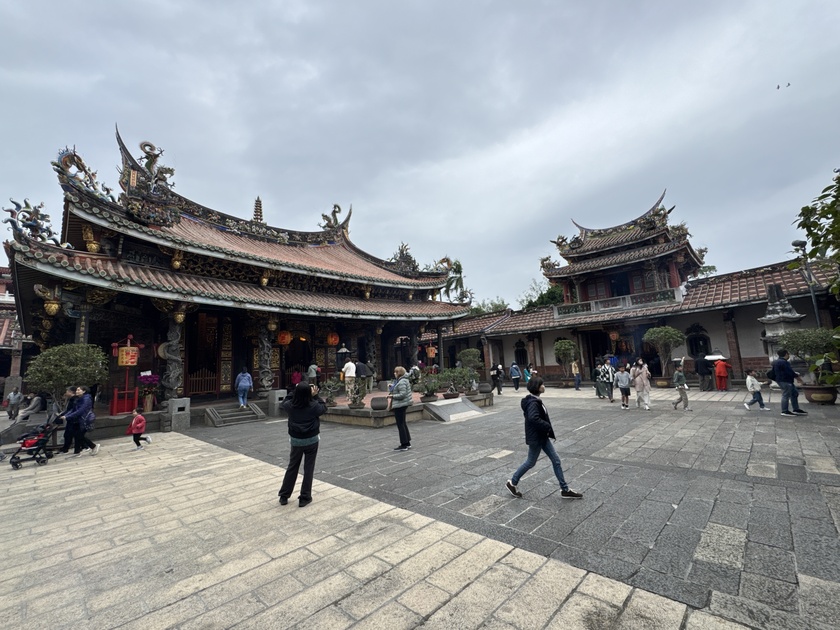Baoan Temple 保安宮
Baoan Temple is dedicated to Baosheng Emperor (保生大帝). There’s a story about him curing a dragon’s injured eye and moving the stick away from a tiger’s throat, making Baosheng Emperor the god of medicine.
The early Chinese immigrants brought him from Fujian in the 16th century. When they first moved to Taipei, they suffered from the plague here. The whole purpose of building the temple and worshipping Baoan Emperor was to stop the plague.
Baoan Temple started as a small wooden shrine in 1742 and later expanded to the size it is now. In 1995, the temple was under renovation. The construction managed to repair its exterior and preserve its artworks including dragon columns and the fragmented ceramic at the same time. As a result, Baoan Temple was given the UNESCO Asia-Pacific Heritage Award of Culture Heritage Conservation.
Getting there is easy. Take the MRT Red Line to Yuanshan Station then take exit #2. From there it’s a short 5-10 minute walk ...
Wat Phra Khao (วัดพระขาว), located in Phra Khao Subdistrict, Bang Ban District, Phra Nakhon Si Ayutthaya Province, is an ancient active Buddhist temple believed to have been established during the Ayutthaya period (likely around the mid-18th century AD, with some estimates placing it circa 1707 AD based on traditional accounts). The temple’s name derives from its principal Buddha image, Luang Pho Khao (หลวงพ่อขาว), a large stucco statue painted white that has been venerated since ancient times.
The temple received its official wisungkhamasima (consecrated ordination hall boundary) on September 27, 1927 AD. Unlike many temples in central Ayutthaya that were destroyed in the fall of the kingdom in 1767 AD, Wat Phra Khao survived largely intact, preserving rare Ayutthaya-era kasat lai rot nam (gold leaf stencil murals) inside the ubosot—considered some of the finest and most elaborate examples from that period. These intricate wall paintings, along with ...
The Chang FA Cup, officially the Thai FA Cup, is Thailand’s premier knockout football competition, organized by the Football Association of Thailand. First held in 1974, it ran intermittently until 1999 before being discontinued and relaunched in 2009 to revive national cup football. Sponsored by Chang Beer since 2015, it has become known as the Chang FA Cup. The tournament is open to clubs from all levels of Thai football, offering lower-division teams a chance to upset top-tier sides. The winner qualifies for the AFC Champions League Elite qualifying play-off and the Thailand Champions Cup, with the champion receiving a prize of 5 million baht.
Port FC, based in Bangkok, is a historic club founded in 1967, originally linked to the Port Authority of Thailand. They play their home games at PAT Stadium. Port has established itself as a consistent force in the Thai League 1 since returning to the top flight in 2017, with strong performances in recent seasons, including qualification for ...
Dragon Town Night Market
Dragon Town Night Market, also known as the vibrant Chula Night Market (or Sam Yan Market) near Chulalongkorn University, is a lively central spot that bursts into life after dark. This compact, student-favored area features rows of glowing stalls offering authentic Thai street food like spicy noodles, grilled meats, fresh seafood, and creamy desserts. The atmosphere blends traditional flavors with a youthful energy—think colorful lights, aromatic street eats, and a mix of locals and visitors. It’s a great showcase of Bangkok’s casual, university-driven food culture, with everything from classic som tam to innovative fusion bites.
Joy Fest Night Market
Joy Fest Night Market is a festive pop-up night market running through late December 2025, with stalls set up until December 30. This holiday-themed event focuses on joyful vibes with a wide array of street food vendors serving seasonal treats, international snacks, and classic Thai dishes. Expect a warm, celebratory ...




















































